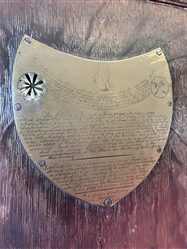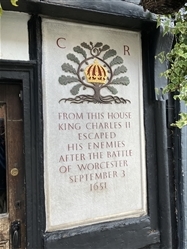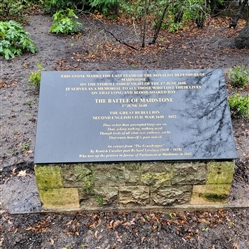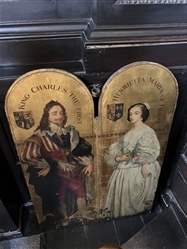Lichfield, A Close Encounter
Memorial Type:
Information Board
Does the monument still exist?
Yes
Installation Date:
unknown
Inscription:
Artist's impression of the siege of Lichfield, with a view from the besieger's positions and descriptive text:
A CLOSE
ENCOUNTER
The Civil War developed from intense rivalry between the Royalists who
were loyal to the monarch, and Parliamentarians who supported the
rights gained by parliament. Lichfield became a key battle
location during this period and at the start
of the Civil War in 1642 was
a Royalist stronghold.
The First Siege
(2nd-5th March 1643)
On 2nd March Lord Brooke’s Parliamentarian
army entered Lichfield and the Royalists
retreated into The Close. However, while
Brooke stood in Dam Street assessing the
action, he was shot dead by a Royalist
sniper, John ‘Dumb’ Dyott, from the top of the
Cathedral’s central spire. Pressure from the
Parliamentarians grew over the next few days
and eventually the Royalists surrendered.
The Second Siege
(8th-21st April 1643)
On 7th April the Royalist Prince Rupert
brought in around 3,000 troops to surround
The Close and launch an attack on the
Parliamentarians. An artillery mount was
constructed to the north of The Close – a
site now known as ‘Prince Rupert’s Mound’.
Their was strong enough to defeat
The Parliamentarians – who are thought to
have taken the Cathedral treasures with them!
The Third Siege
(9th March – 10th July 1646)
This final siege of The Close saw the
Parliamentarians fighting back led by Sir
William Brereton. A series of artillery mount
Were built surrounding The Close. The central
Spire on the Cathedral became the focal point
For his bombardment, and it finally collapsed
On 12th May. Despite this King Charles I
Urged his troops to hold out but on 10th July
They admitted defeat and surrendered.
Allegiance:
Neutral
Condition:
Average
Condition Description:
Faded and worn commensurate with outdoors location. Observed July 2022.
Memorial Address:
Dam Street, Lichfield WS13 6AE
County:
Staffordshire
Country:
England
Location within building:
In street
Geoloation:
52.68470036259796, -1.8286820455266568





